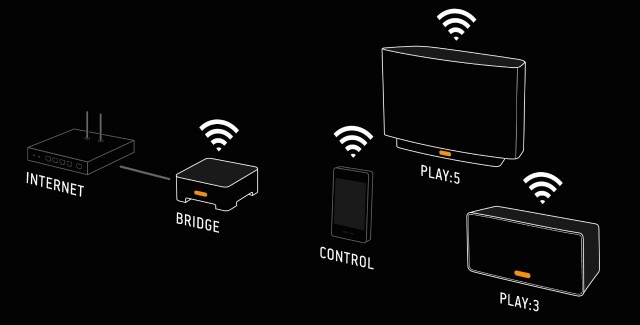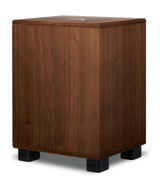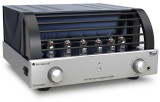Sonos - reinventing home audio for the digital age
The Sonos Hi-Fi system has a simple, but bold vision - fill every home with music and make listening a valued experience again. They want to make it easy for everybody to listen to the music they love in every room of their home. To hear the songs they love, to discover new music they never knew existed, and to appreciate it all with the highest sound quality.
The Innovative Concept for Wireless Music System
In 2002, the second-generation iPod was only just getting Windows compatibility, the iTunes Music Store hadn't yet launched, Napster had been shut down and Pandora had not debuted to the public. Digital sales were yet to be incorporated into Billboard's music single charts and there were less than 16 million U.S. households with a high-speed broadband connection.
In context then, Sonos founder and CEO MacFarlane's idea of a digital streaming music service that used your internet connection to bring you music from both your computer and the web, and send it all around your home — without wires — looks positively revolutionary.
"When the Sonos founders got together they saw two trends — digital music and wireless — and their vision in 2002 was that all music was going to go streaming," says Sonos' director of PR and culture, Fiede Schillmoeller.
"That was pretty early to make that statement, and I think we're still not there 100%, but it's inevitable. That, combined with wireless, makes the Sonos product. When we started developing the product there were routers in many houses already — the vision was that there will be a router in every house over time."
With more than 80 million U.S. households now hooked up with a fixed broadband subscription, a wealth of legal online music streaming services and apped-up mobile devices that are ready to play nice with hardware, the Sonos system's evolution has matched the pace of the wider markets perfectly, now offering a tidy solution that makes the most of complimentary products and services.
The Sonos System
Having evolved from the earlier bulky and expensive "ZonePlayer" models, the Sonos system now has two all-in-one players. These are the Play:5, a five-driver Hi-Fi speaker system that costs $399 and the Play:3, a smaller three-driver Hi-Fi speaker system for $299.
Both boast an Ethernet port to hook up to your router, but if you want to place the speakers in different rooms than your router, you can buy the Sonos Bridge for $49. This connects to your router and wirelessly links multiple Sonos players around the house.
In addition, there's the Connect and the Connect:Amp that let you hook up existing speakers or home theater set-ups to the Sonos system.
Finally, there's the Sonos Controller, a touchscreen remote, but rather than forcing the consumer into shelling out an additional 400-plus dollars to complete the system, Sonos actively promotes its Sonos apps for iOS and Android devices. These apps offer full-fledged functionality and can be downloaded at the relevant app marketplaces for absolutely nothing. It's a move that raised eyebrows in the industry.
"A lot of people in the industry claimed that we had gone insane," says Schillmoeller. "But we could see over time that this was the best decision for our company, as it made the Sonos system so much more accessible, so much easier for everyone to control their systems. Really, our business was to sell players, so this really paid off for us big time."
In fact, Sonos was one of the earliest CE companies to launch an iPhone app. Its first Controller went live in the App Store in the fall of 2008 — just a few months after the store launched. This speed, explains, Schillmoeller, is because the company already had its eye on the Apple mobile.
"We had a vision that when the iPhone came out it was pretty clear that this was going to change everything. This was the time when there was no apps for it, no App Store, but it was clear that smartphones had hit a different level."
Since 2008, Sonos has continually updated the iPhone app, launched an iPad app and catered to users of another popular mobile platform and its variants, Android. The latest release is an app for any Android tablet running 2.2 or higher, such as the Kindle Fire, the HTC Flyer and the Samsung Galaxy Tab.
"The apps have expanded to different platforms, we have just released an app for Android tablets, we have one for Android phones, a great one for the iPad. Those are the dominant controllers for the Sonos system, there's still a piece of hardware that we sell, but the main controllers for people that buy a Sonos system are the apps, and that's definitely the future for the company."
How Sonos System Works

In an example set-up, the Sonos Bridge connects to your router with an Ethernet cable. The Play:5 speaker is in your living room. The Play:3 speaker is in your kitchen.
The two players connect to the Bridge and you can control the entire system from your computer or with your phone or tablet. You can stream music from your computer — your iTunes or Windows Media libraries — sign directly in to an online music streaming service, such as Spotify, Pandora, Last.fm, Rdio, an internet radio station and so on, and play tunes from that service, or access music stored on a NAS.
You can play different music on different speakers — so a Spotify playlist on the Play:3 in the kitchen and an album from your computer on the Play:5 in the lounge, or play the same tune, perfectly synced, on both players.
You can control the system from multiple devices. So, you could turn the volume up in the kitchen from your computer, down in the lounge from your iPhone and change the tracks or music source from an iPad. As far as sound quality goes, the speakers automatically adjust the EQ levels dependent on the track.
Sonos puts a big emphasis on ease of use. Initial set-up is a master class in out-of-the-box simplicity. Adding new players into the system is as easy as pressing a button, adding a controller the same and the user interface is intuitive.
"If you see really good consumer electronics — take some Apple examples — the hardware isn't the big deal. It's always the software and the interface that drives the success, and this is the model we have," says Schillmoeller.
Most consumers who set up a Sonos system won't think twice about the tech behind it. The system works so well they won't have to, but it's based on a wireless mesh network. The Bridge creates the network from the router's Internet connection and is the only device that needs to be hard-wired into the router. The players and controllers are mesh "nodes." All devices then communicate across this easily expandable network, through the separate nodes.
"We did not want to rely on the router that was already installed, that's where the idea for our own wireless network came about," Schillmoeller explains. "It's called SonosNet."
"It's rock solid. You can stream multiple tracks in multiple rooms, you can stream the highest quality files and uncompressed audio to multiple rooms in your house."
The future of Sonos?
The Sonos difference is not just in the details, it's in the product development process.
"When we start developing new products, the user experience, the hardware, software and customer support teams are all around one table. They start building the first ideas, then prototypes, then they start testing and go back and say 'This doesn't work the way the customer expected it to work,' they go back, they adjust. That way you develop products in a much more customer-centric way." Schillmoeller explains.
In fact, Sonos doesn't categorise itself in the way most technology companies do. "We don't see ourselves as a hardware company or a software company, because we believe consumer electronics should be a great combination of good quality, smart hardware and intelligent, well-designed code that goes along with it," says Schillmoeller.
Sonos wants to create the "ultimate listening experience." While it's taken almost 10 years for the Sonos product and wider music and mobile industries to catch up with MacFarlane's innovative vision, right now the Sonos system is as close to that as you can buy for under $500. And as far as the future goes?
"We’ll continue to work with the best partners and the best technology to provide access to music through various streaming services," says Schillmoeller. "We believe that the future is digital, and we are committed to delivering music to consumers wirelessly in high-fidelity audio."
Recent Posts
-
Advance Paris Audio Now At Stereophonic
**Unveiling the Marvels of Sound: Advance Paris Audio Brand** In the realm of high-end audio, w …31st Oct 2023 -
The New REL Classic 98 Sub Woofer
IntroductionIn the world of audio, the quest for deep, impactful bass is never-ending. Audiophiles a …7th Oct 2023 -
World-Class PrimaLuna: Elevating Your Audio Experience
Introduction to PrimaLunaIn the pursuit of high-fidelity audio, audio enthusiasts are constantl …30th Jun 2023



